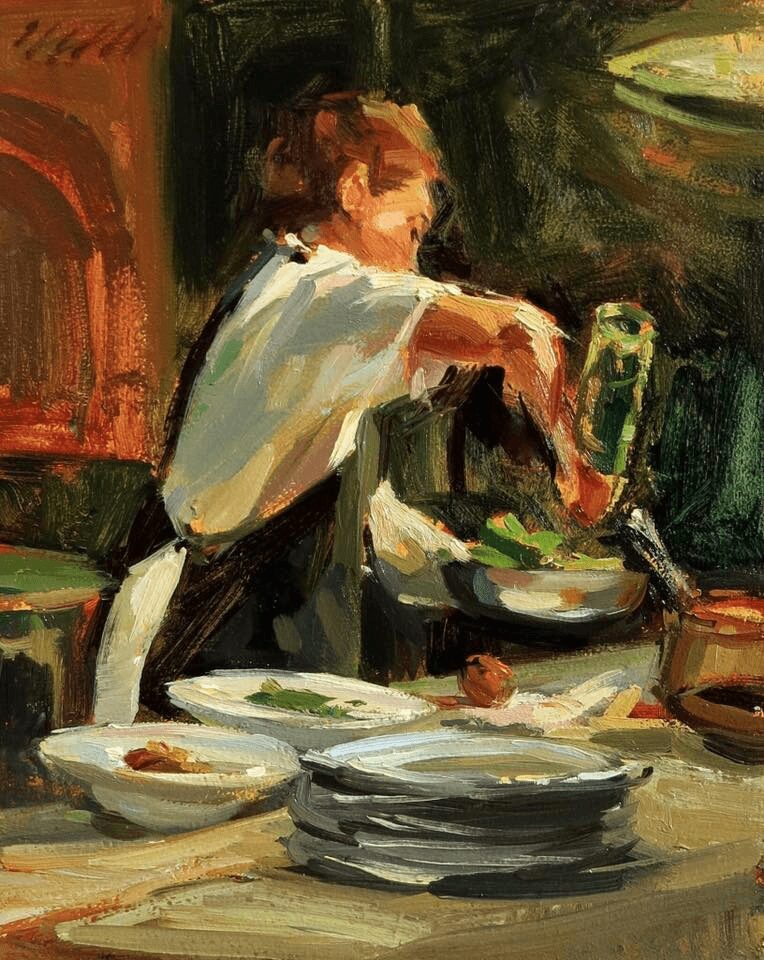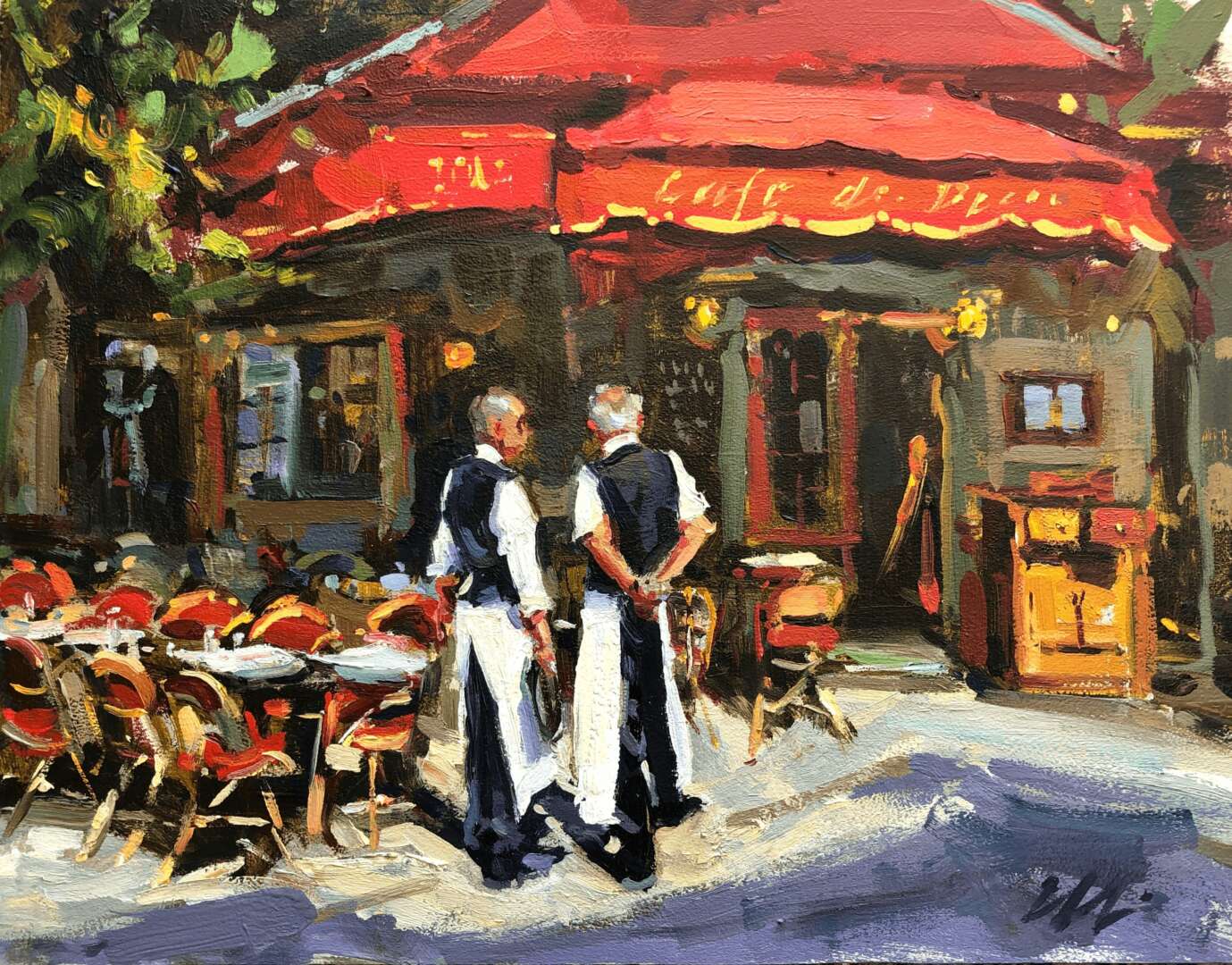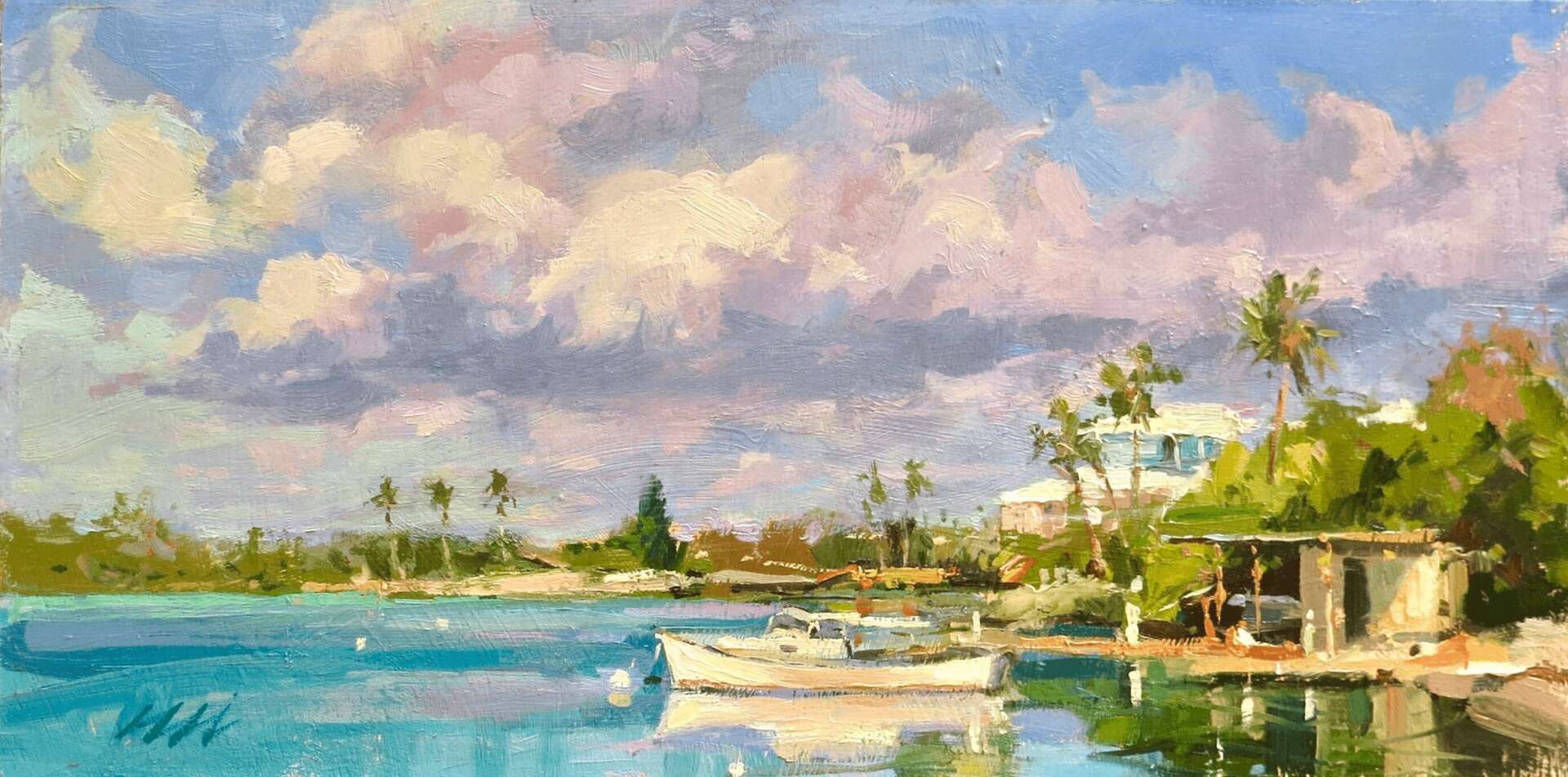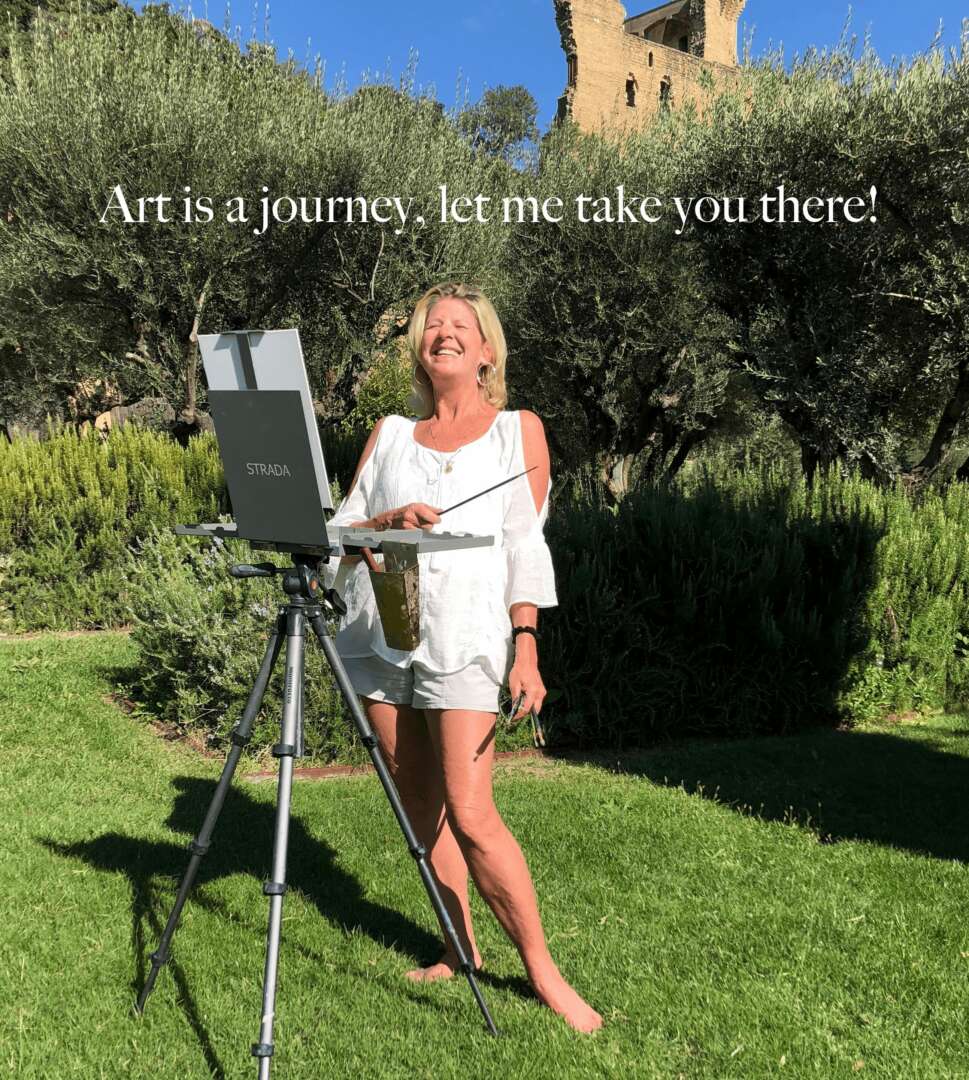We’re excited to introduce you to the always interesting and insightful Eli Cedrone. We hope you’ll enjoy our conversation with Eli below.
Eli, thanks for taking the time to share your stories with us today How did you learn to do what you do? Knowing what you know now, what could you have done to speed up your learning process? What skills do you think were most essential? What obstacles stood in the way of learning more?
I’ve always been influenced by the power of images to express ideas and emotions. Drawing was something I did quite naturally from a very young age and I’ve never doubted for a moment that I possessed the art sprit.
When I went to art school it was difficult to find instruction in representational painting, so upon graduation from the School of Art & Design, Suffolk University in Boston, I furthered my studies in Florence, Italy. This provided an academic foundation.
Oddly enough I chose to pursue work in Advertising in Bermuda of all places.. Later, while living in California I segued into working as an editorial design and illustration. In 1996 I returned to Boston to renew my studies at the School of the Museum of Fine Arts and the Academy of Realist Painting. I was extremely fortunate to have been drawn into the studio of Richard Schmid in Putney, Vermont. Here I was exposed to the alla prima approach to painting by a living master. This foundation in traditional methods initiated my career as a professional, full-time painter.
On our journey to become better painters we often copy the work of others. This is great practice as students but at some point its necessary to experience firsthand our own truth. Direct observation from nature helps to avoid assumptions about color. A variety of color lives in the landscape, with its dramatic scenery, colors and the ever-changing light.
People often say to me “painting must be very relaxing.” And my response is always – if you’re relaxed then you’re doing it wrong. Painting is problem solving on a visual level and not a mindless escape. It takes a highly evolved, series of mental maneuvers to create a great work. That being said, believing that every painting you make must be absolutely perfect is an unrealistic goal. You’re never going to achieve it, so you become too scared to even try. Instead of aiming for perfection, strive for every painting to teach you something and learn from your mistakes.
When I paint all of my senses are involved but learning to “see” is a skill one must develop. I often tell my students, we’re not painting objects, we are painting the effect of light on objects. It’s essential to simplify what’s before us into abstract patterns of light and shadow, before creating the illusion of reality.
I think it’s important to stay focused and develop your work without outside influences, but there comes a time to reach beyond the studio and enjoy the company of other artists.
Residencies give me the opportunity to work abroad in another environment away from what’s familiar and I get to interact with the community. Plein air invitationals are a great way to stay connected as well as weekly, drop-in painting sessions. One of the ways in which I connect to the public is through painting on location. This experience brings the studio outdoors and allows me to share my work and ideas with people I meet.

Great, appreciate you sharing that with us. Before we ask you to share more of your insights, can you take a moment to introduce yourself and how you got to where you are today to our readers.
My goal as a painter is descriptive precision balanced with an immediacy of expression. Ultimately my concerns are with the qualities of light captured with paint.
I’m attracted to the human form. I love painting people in everyday life, imbuing the emotional power of a moment in time into a narrative theme. I love capturing the effects of figures in sunlight. Outdoor painting, evokes a personal response to nature beyond the obvious and descriptive. I’m inspired by the fabric of which our environment is woven. Daily surroundings that show a visual patina of time speak to me; the alchemy between what is transient and what is solid. I feel that common, everyday things can be beautiful and resonant without being manipulative or artificially provocative.
As artists we’re meant to be astute documentarians of the world around us. Not in the mindless copying in mosaic of all we see – but a fresh vision uniquely our own. It’s the invisible something in a painting which makes it good. The urge to capture and hold onto a memory of light is always present in my mind.
I prefer to work directly from life, at least initially, so that the vitality of each image resonates. I’m very attracted to the human form, imbuing the emotional power of a moment in time into a narrative theme. I strive to convey the alchemy between what is transient and what is solid, revealing between the two the matrix of the shadow and light patterns of life.

Let’s talk about resilience next – do you have a story you can share with us?
I’ve always had a restless spirit, and found it difficult to work in a cubicle from 9-5. Becoming your true potential is pretty rare in society. It’s been said that fear is the thief of dreams. The fear of being uncomfortable is a very palpable thing. But my fear of failure is overshadowed by the realization that painting is a gift, we have to make the most of it and not waste a moment. Our weakness forms us even more than our strength. When you act from passion and commitment to an idea, then providence steps in.
In many ways the creative process is a metaphor for life: it’s letting go of fear, trusting in our abilities, and accepting our “mistakes” with patience. It’s also about asking tough questions. The best gifts I’ve ever received have been questions I couldn’t dodge. Good questions are better than good answers, in that they give us purpose.
The creative journey does not come easy, it takes real effort to move beyond mediocrity. As is the case with professional athletes, musicians and great artists, this “ease” comes from years of hard work and practice. Our ego wants it easy. In reality nothing worth doing ever is. Dharma is one of the most important words in the Hindu and Buddhist religions. Narrowly defined it means “your spiritual duty,” or “your place in the universe.” A Dharma Bum is a wanderer and a truth seeker, and in the case of Kerouac’s novel these divine vagabonds were bohemians, writers and artists who shunned the confines of society.

Is there something you think non-creatives will struggle to understand about your journey as a creative? Maybe you can provide some insight – you never know who might benefit from the enlightenment.
People often say to me “painting must be very relaxing.” And my response is always – if you’re relaxed then you’re doing it wrong. Painting is problem solving on a visual level and not a mindless escape. It takes a highly evolved, series of mental maneuvers to create a great work. That being said, believing that every painting you make must be absolutely perfect is an unrealistic goal. You’re never going to achieve it, so you become too scared to even try. Instead of aiming for perfection, strive for every painting to teach you something and learn from your mistakes.
I’ve often compared the process of painting to a horse race. It’s important to pace yourself; lay in a good foundation, maneuver through the painting with confidence and skill and hold back till the finish line is in sight. This resonated with me because as in life, we often lack patience and want to get to the good stuff first.
When I paint all of my senses are involved but learning to “see” is a skill one must develop. I often tell my students, we’re not painting objects, we are painting the effect of light on objects. It’s essential to simplify what’s before us into abstract patterns of light and shadow, before creating the illusion of reality.
Everyone can learn to “see” the world through the eyes of the artist.
Contact Info:
- Website: https://www.elicedrone.com
- Instagram: https://www.instagram.com/elicedronefineart/
- Facebook: https://www.facebook.com/elicedronefineart/
- Other: https://artfulhand.blogspot.com
Gallery Representation
Waterhouse Gallery, CA https://www.waterhousegallery.com
Gallery Antonia, MA https://www.galleryantonia.com
Charles Fine Arts Gallery, MA https://charlesfinearts.com

Image Credits
none


